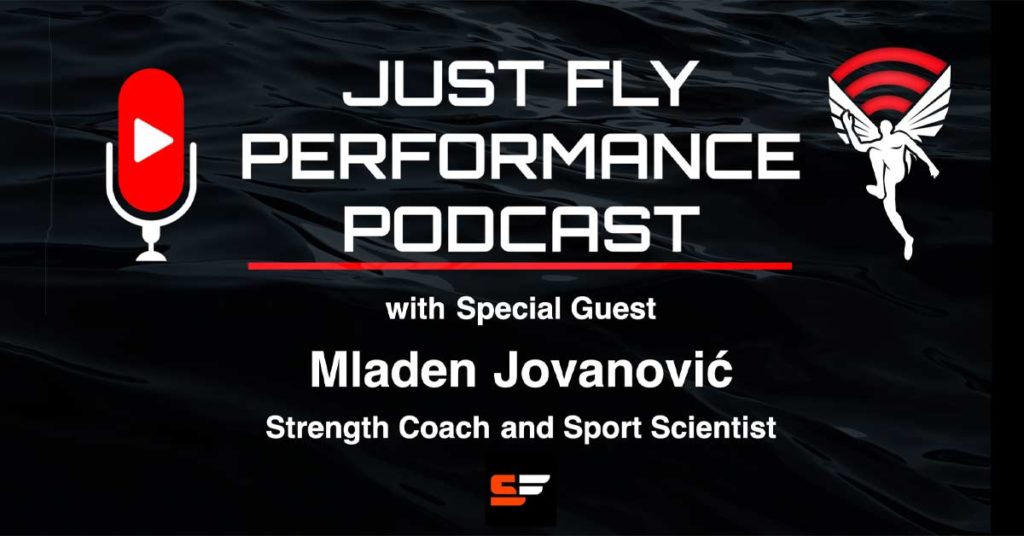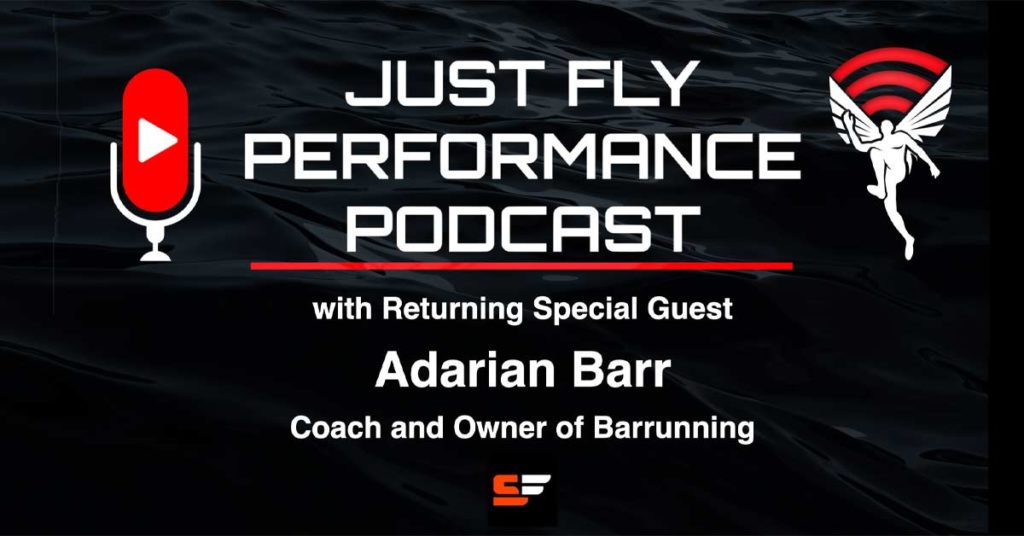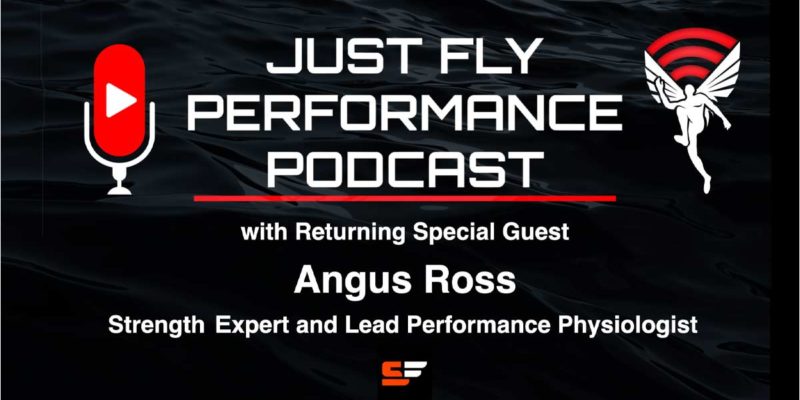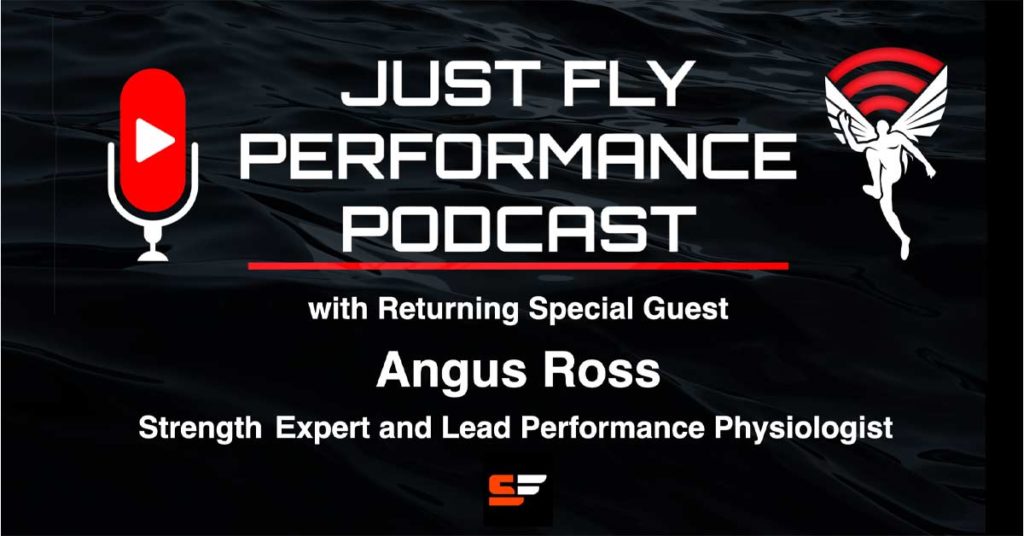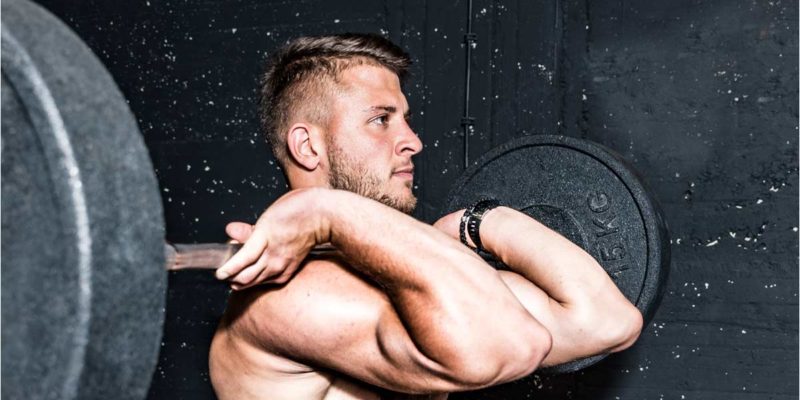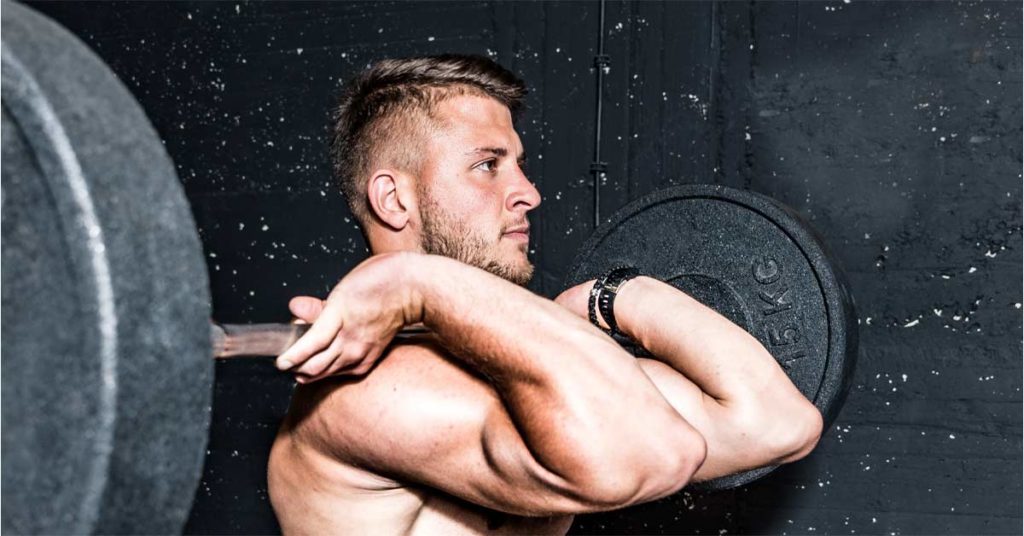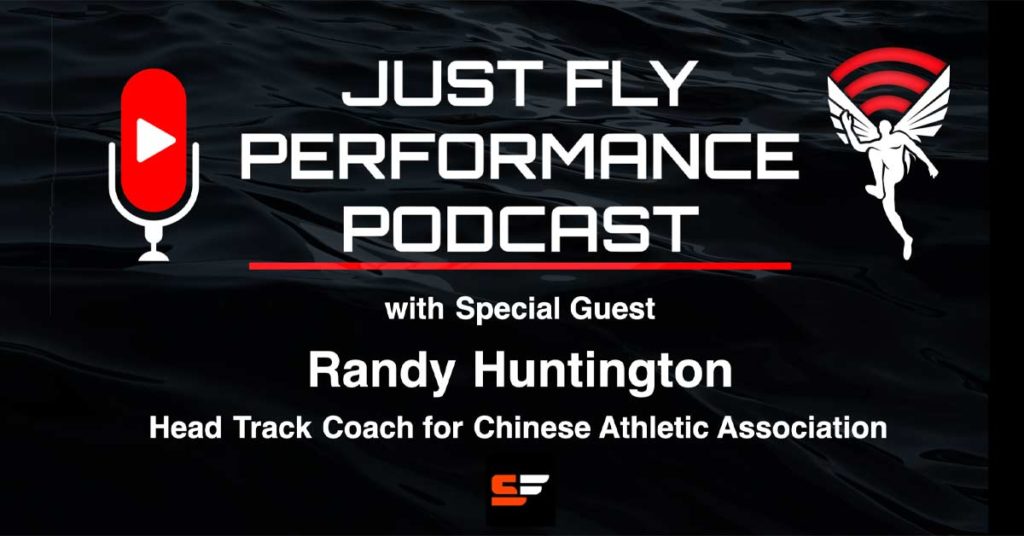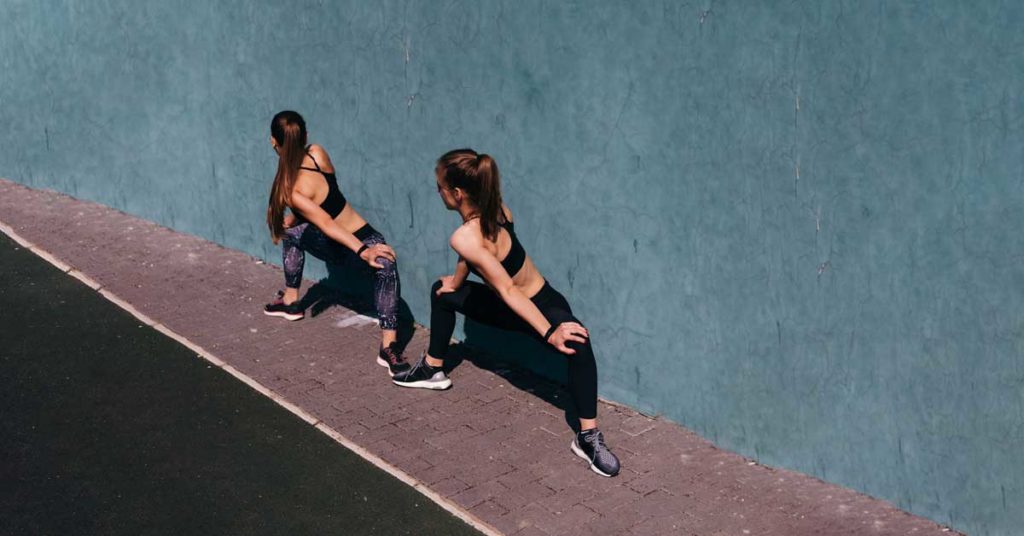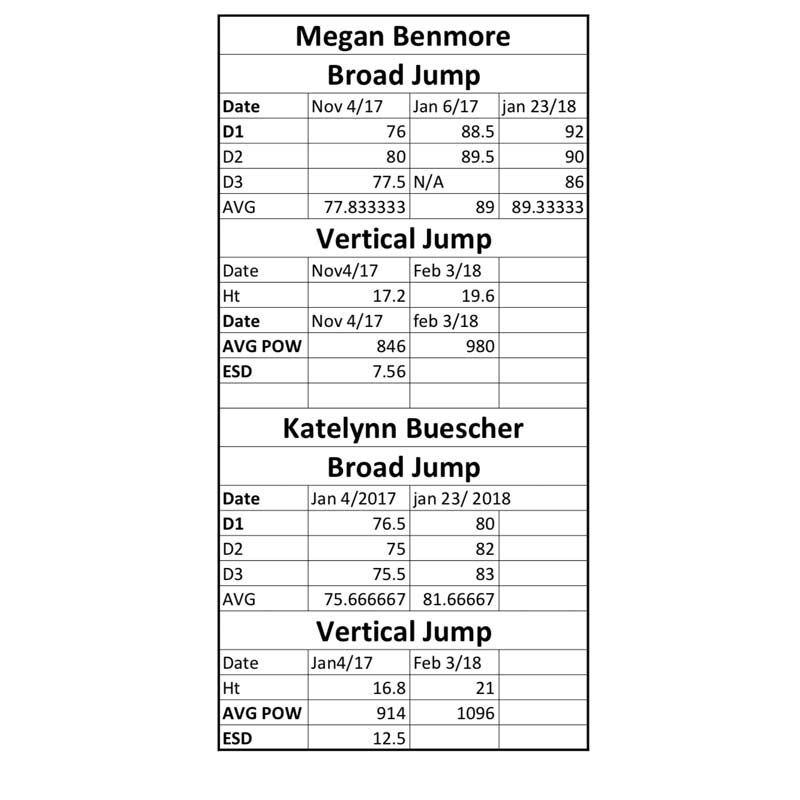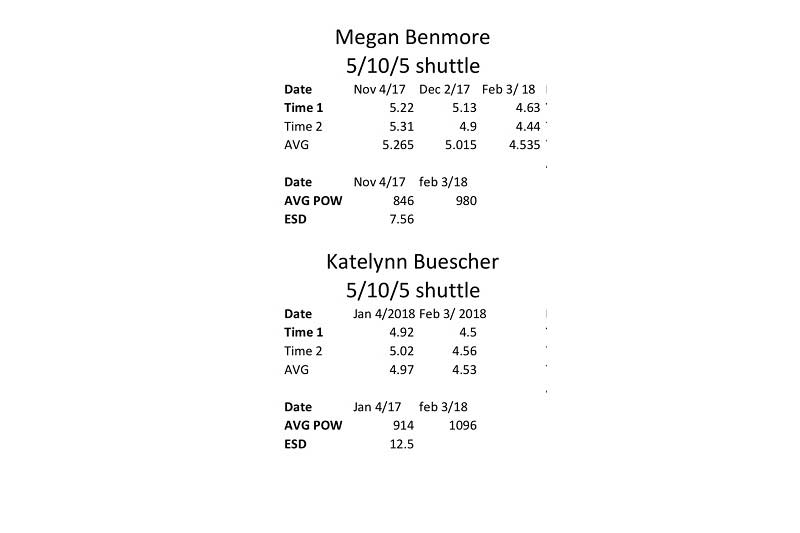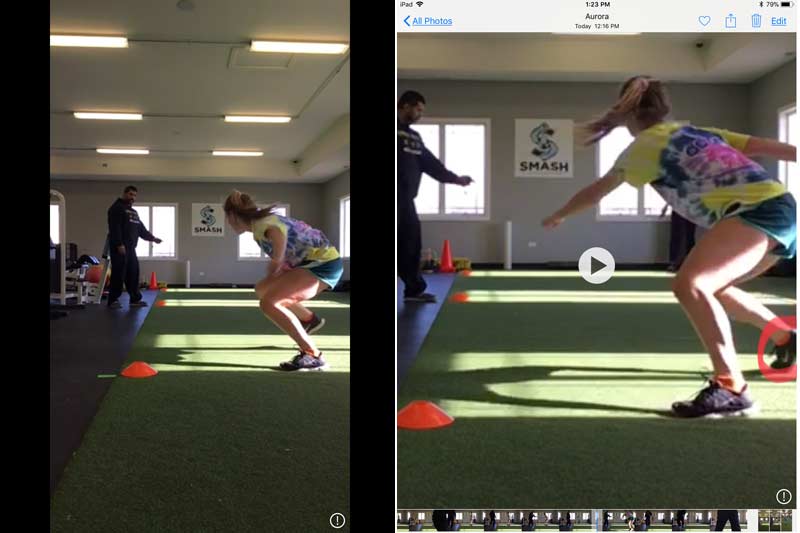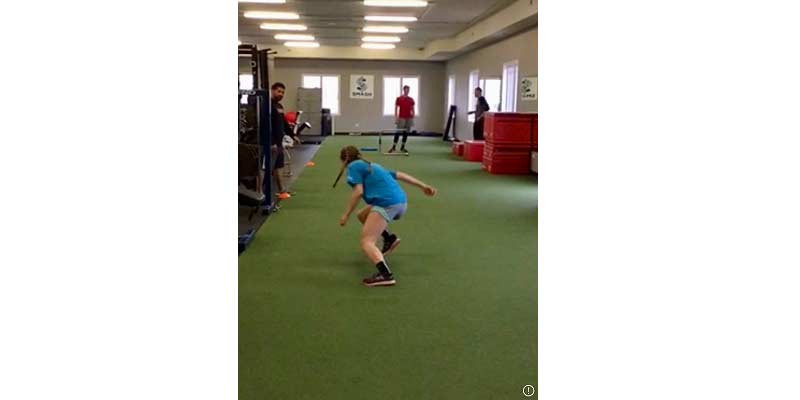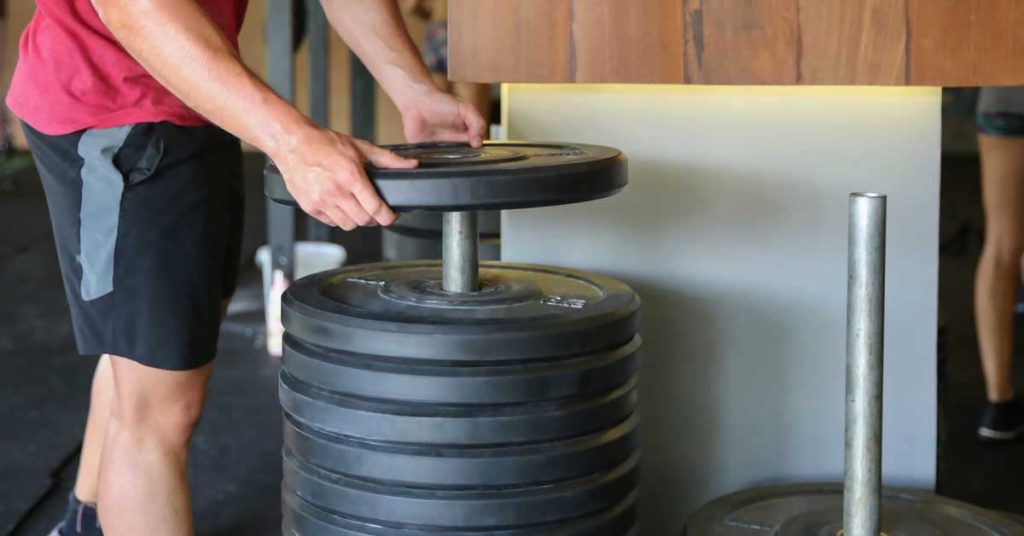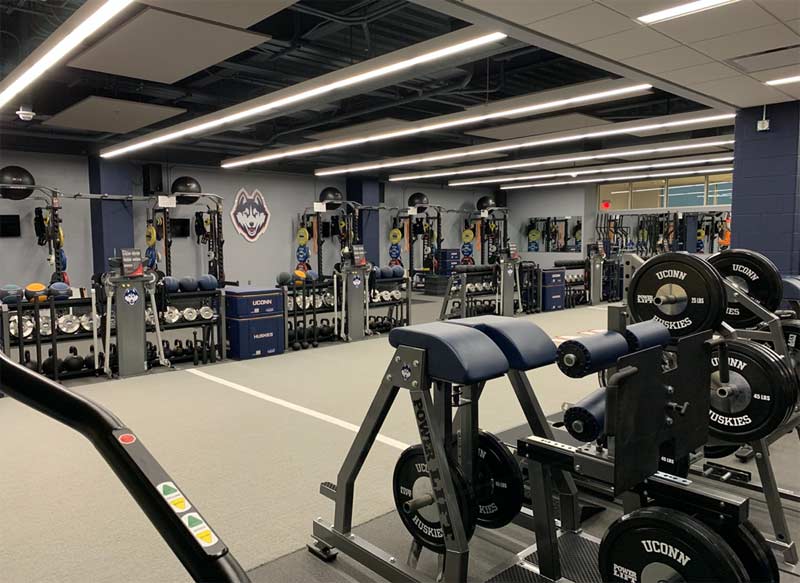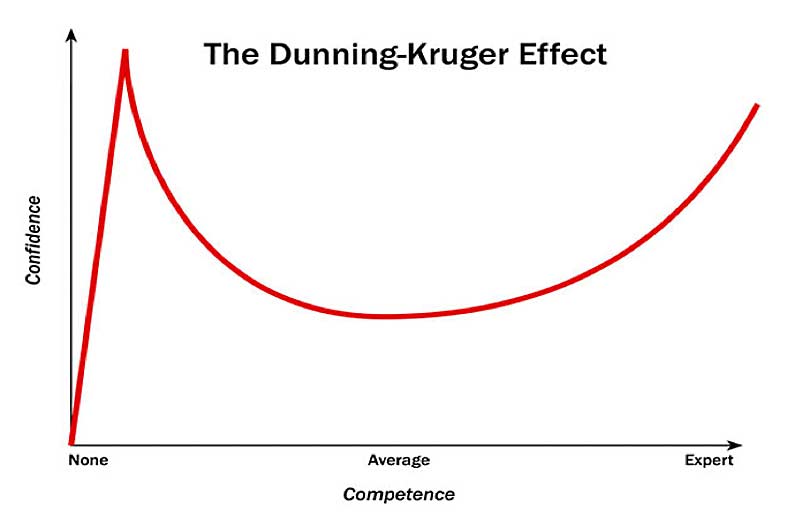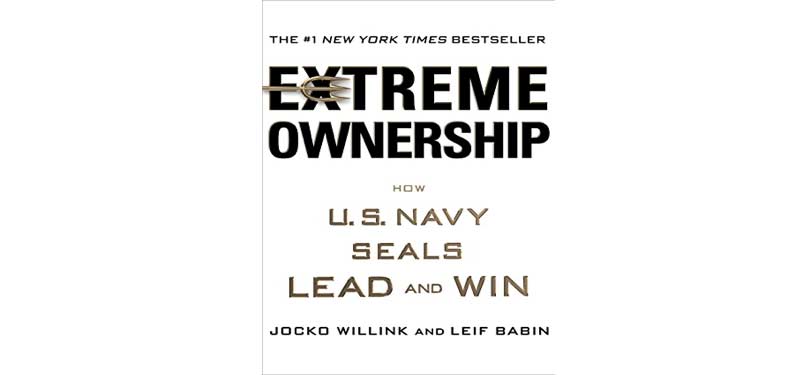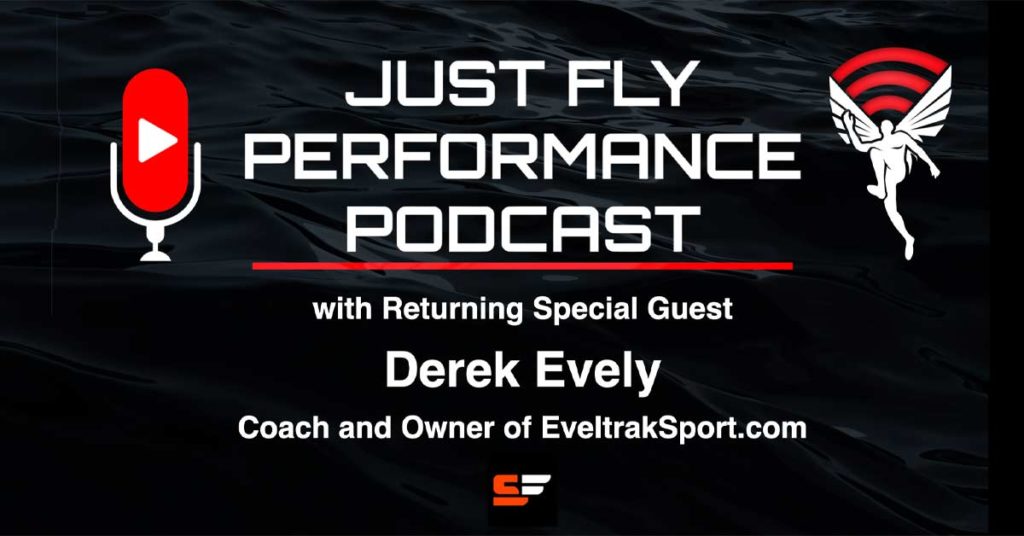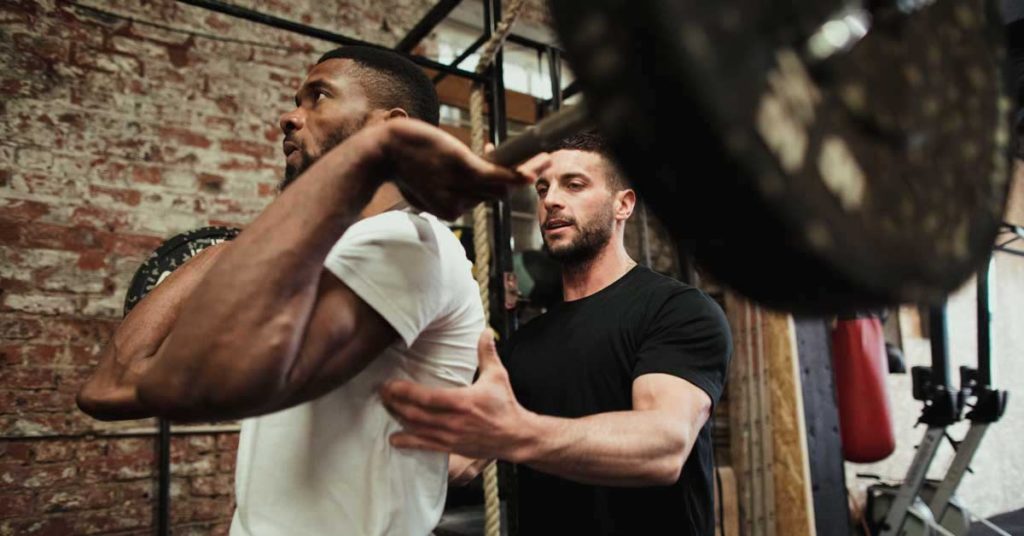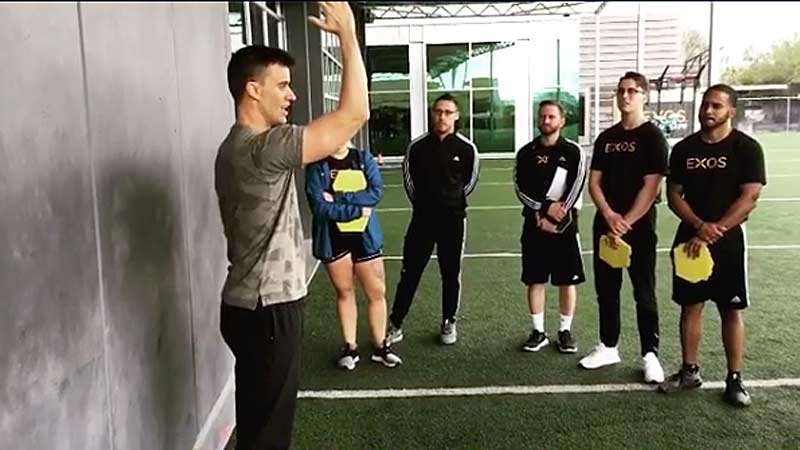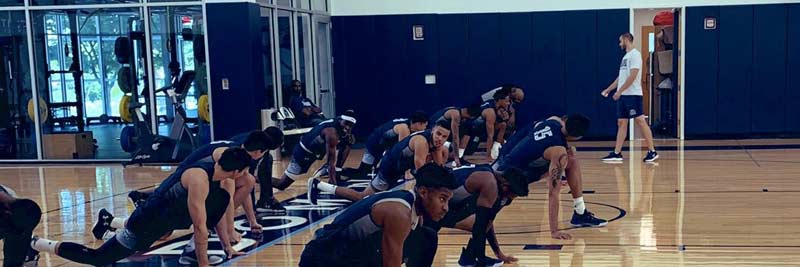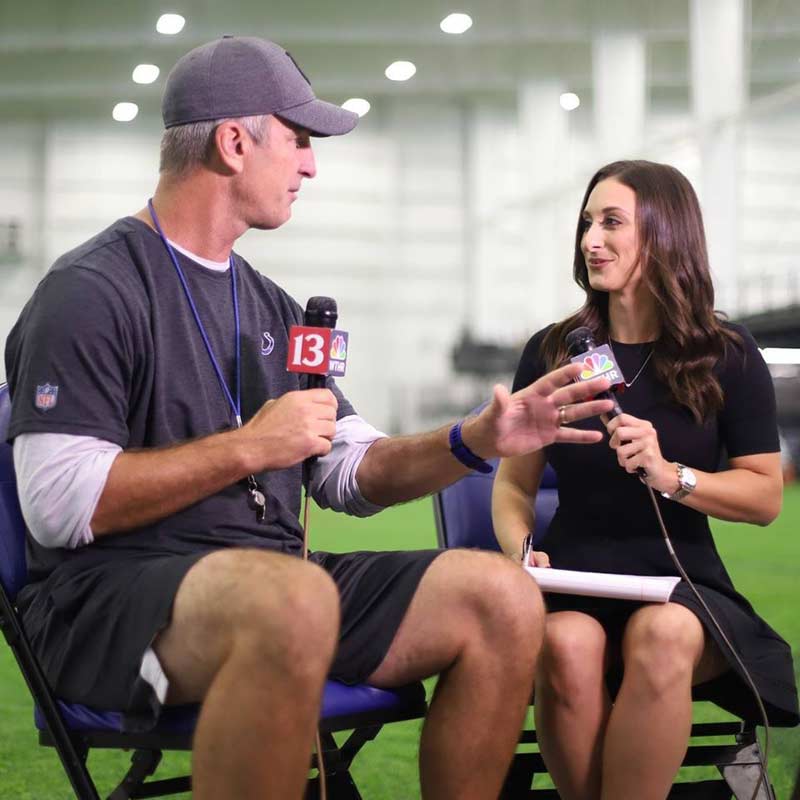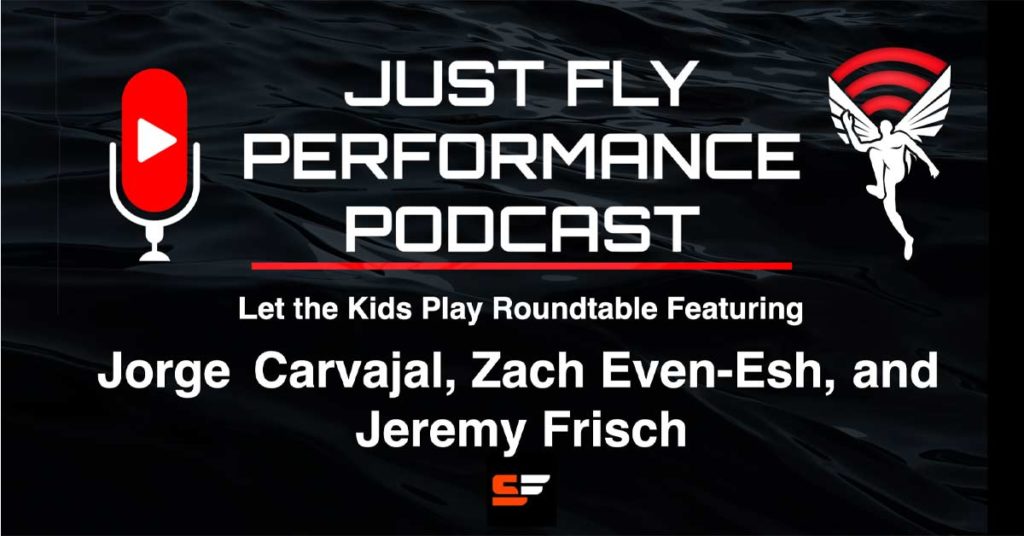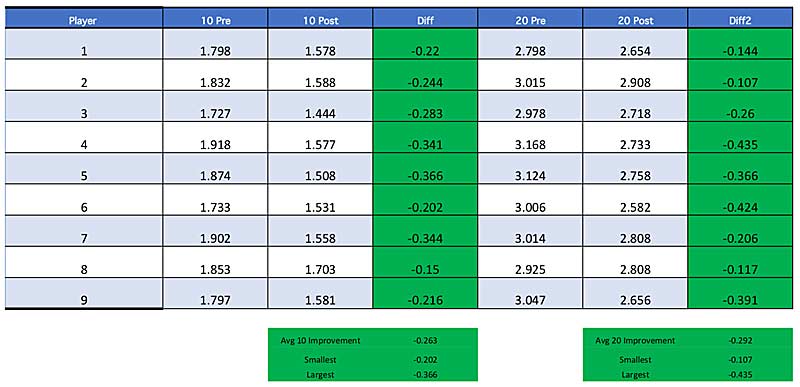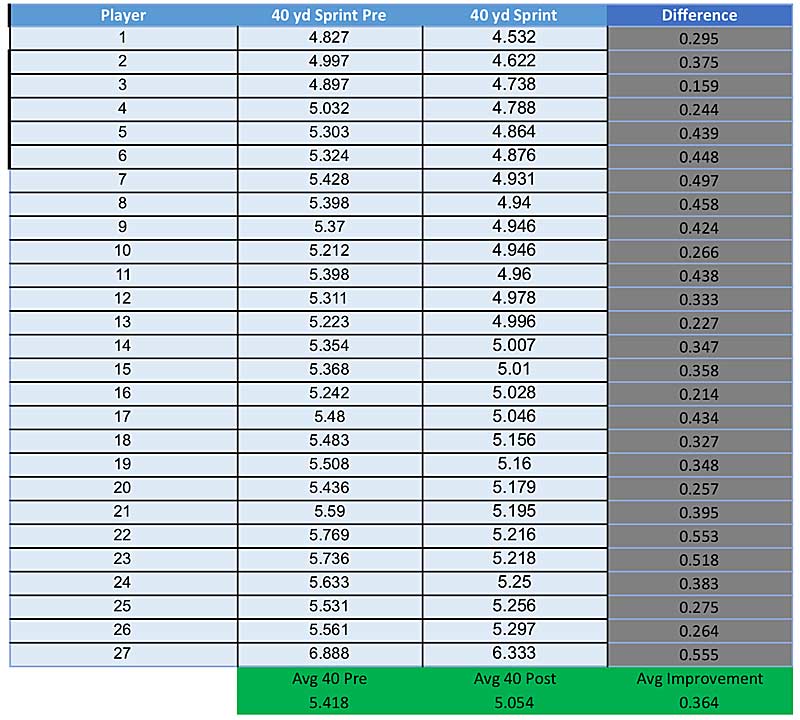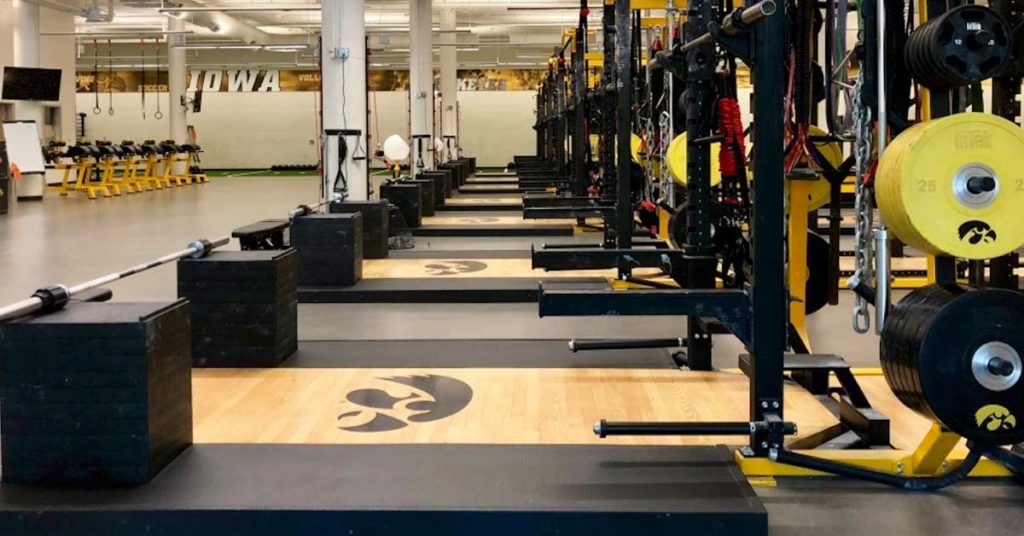
In my previous article on the strategies and opportunities presented by velocity-based training (VBT), I mentioned another advancement in technology sweeping across the strength and conditioning field: strength programming software. This software was made possible by the advent of smartphones and tablets, which gave us the opportunity to collect and visualize data. Prospects are stronger than ever in the field of electronic program builders (e.g., BridgeAthletic, TeamBuildr, TrainHeroic, etc.), but PUSH is, to my knowledge, the only company that allows comprehensive integration of a velocity-based measurement system paired with the ability to write, visualize, and schedule workouts between the coach and athlete.
PUSH is a rapidly growing company. It originally offered a VBT option that was only worn on the arm, but it can now be attached directly to the barbell as well, allowing for wireless measurement and smooth interaction during a training session. Not only are they advancing the field as an inertial measurement unit for VBT, but PUSH has simultaneously tackled giving coaches in a team setting the ability to manage their programming, assign workouts, and monitor all the valuable information that occurs during a session to be referenced as the training unfolds with their PUSH portal program builder.
Quantifying Training Load with Software and Time Management
Data is the greatest driver for the shift to a paperless portal. The sport science and data analytics groups that have integrated with the strength coaches and sport organizations around the world created the opportunity to improve probability and progress. If you don’t have a system with the ability to log workouts electronically, data gets lost (e.g., actual volumes experienced, loads lifted, velocities performed, total weight, session duration, session RPE). PUSH allows for the collection of all this information.
Data is the greatest driver for the shift to a paperless portal. If you don’t have a system with the ability to log workouts electronically, data gets lost, says @Cody__Roberts. Share on XEquate it to the data that was once lost on the practice field, now captured through GPS (e.g., distance covered, speeds achieved, accelerations and decelerations). Strength programming software provides us with the chance to quantify training loads experienced in the weight room and gives us more objective data that we can pair with the subjective reports both pre- and post-workout. This data allows a coach to monitor training load, showcase progress over time, and provide direct feedback to staff and athletes for their efforts.
Yes, training and weight room work are not the only factors impacting the athlete, but these training metrics provide potential explanations as to why a specific quality (i.e., max strength, power, speed) has or has not changed. Performance happens each and every day in the weight room and, from a management standpoint, having a record of what an athlete has accomplished will be important for long-term athlete development at the high school, collegiate, professional, and elite levels.
You can zoom out further than the days, weeks, and even months on a given workout sheet and look across the year to compare multiple seasons based on workload and performance. Daily readiness is no doubt important, but we do not want the focus on the present to distract from the overall preparedness of the athlete over time. Instead of being overly consumed with the microcycle, the PUSH portal allows us to truly visualize the results of the macrocycle. Rather than a periodized layout that waves in and out of phases, peaking at just the right time for championship competition, the monitoring and tracking of training data showcases progress and performance.
Instead of being overly consumed with the microcycle, the PUSH portal allows us to truly visualize the results of the macrocycle, says @Cody__Roberts. Share on XThat is a coach’s ultimate goal—constant improvement, especially at the developmental levels. A coach wants to be able, year after to year, to implement a training program that creates an adaptive response and leads to physical developments that, in turn, transfer to improvements in sport and success at a championship level. Progress is a process, and being able to see how far an athlete has come can be very telling.
Evaluation and Reflection
The ability to visualize this objective information provides usable feedback for the coach in rating the effectiveness of training and enables the athlete to either be motivated or challenged by the results. If a performance marker decreases, it forces the athlete to reflect and redirect; if something improves, it can encourage them to continue on the path they started and reinforce their training habits and actions. The same can be said for the coach who prescribes and implements the program. What is the training target? Did that target improve? Why not? What needs to change?
That is the difference between working out and training. Working out is a singular session aimed at breaking a sweat and challenging the body with a possible no-pain, no-gain mentality. Training, on the other hand, has a purpose: multiple sessions that stimulate rather than annihilate, with an end goal of the athlete looking to improve.
Strength programming software allows information to be saved and analyzed rather than having to flip through the pages of a sweaty, smudged, and scribbled-in training journal to find notes on exercises, sets, reps, or weights. But the dedicated athlete who keeps a diary of training progress is in the minority. The majority of coaches and athletes in the team setting simply throw their workout sheets into the recycling bin when complete—a day’s, week’s, or month’s worth of training lost and only just a memory.
Strength programming software allows information to be saved and analyzed, rather than being thrown into the recycling bin when workout sheets are complete, says @Cody__Roberts. Share on XI’ve tried stapling successive sheets to each other for reference, and I’ve been a part of programs that have filed workouts away. Neither of these are long-term solutions and both take an unnecessary amount of time and energy.
Time Management
Time is a precious commodity, so anything that improves efficiency, effectiveness, and interaction is beneficial to coaches and athletes. I know coaches, myself included, who have taken the written sheets from the weight room floor and gone back and forth between sheet and computer screen, punching in the numbers from a session to save and catalog them for later reference. But this is not a long-term solution either.
How would you justify doing it for one and not all, especially with a large organization or in an athletic department setting of multiple teams? In light of the large number of athletes that many coaches work with and everything else that being an athletic performance staff member entails, if this process is going to be sustainable, it has to be time-efficient.
The Tried-and-True Opportunities of Excel
Programming software presents many opportunities, but in my professional career, all I’ve ever known is creating hard-copy workout sheets through Excel. As I said previously, Excel allowed me to put my vision of a training session and block into action for an athlete to see and understand. Excel starts with a blank canvas and allows countless options for creativity, editing, and adaptation for any workout, text, graphic, color combination, and format. I have also benefited from the knowledge and skills of others (e.g., colleagues and tutorials such as ExcelTricksforSports on YouTube) to push the limits of Excel via equations, macros, and pivot tables.
Mladen Jovanovic’s Strength Card Builder showcases how Excel’s near-endless possibility and adaptability can help create a system from scratch. It’s a pseudo software that allows the sometimes-scattered mind of a physical preparation coach to organize thoughts and exercises and quantify loads and volumes. This is a product I encourage you to check out. The work Mladen does is always top-notch, and it may be just what you’re looking for on this front to help organize and improve your daily operations.
I realized when watching Mladen explain his most recent update that I’m late to the party. Since I did not develop the sheets from scratch, as he has, I do not necessarily understand all that it offers and how to work through creating a program. It may be at a point where it is too complex to understand. Rather than me personally building the worksheet within the Excel file, I come to an already-created document that has equations and interactions that I do not comprehend. It can be overwhelming, especially in a framework of trying to simplify and improve.
Remember, too, that Mladen’s goal may be different than a TrainHeroic or PUSH program builder, as schemes (i.e., recipes) are offered. A system like this may be geared more for a younger coach than someone looking for the freedom to implement their own programming. I’m sure it offers both opportunities and is potentially worth a look if you haven’t explored it already.
Do not fall victim to “paralysis by analysis.” This is a roadblock that I often come to when vetting numerous programming software options. Rather than simply being able to type in an exercise or a line of text, or map out sets and even use rep ranges, there are numerous clicks and proverbial hoops that you have to jump through when trying to translate a training program onto the page.
Furthermore, I argue that, at times, it is far too complex in the first place. It is not necessary to have every exercise categorized, and dropdown menus of VLOOKUPs and specific recipes for training programs or progressions are a pipe dream for effectiveness. Before you know it, you can be lost in an incredibly complex system of sheets, macros, pivot tables, etc., but if you build it yourself, you may understand how to effectively navigate and make it work smoothly for you. I simply lack the computer skills to create a workout builder that intricate and respect that is not my area of interest or expertise. But I do understand that Excel offers some very impressive opportunities, so all the more power to those who are able to use their creativity and intelligence to make it work for them and the likely massive number of athletes they train.
Don’t let programming software take you away from working directly with an athlete and actually coaching by forcing you to spend more time on the computer, warns @Cody__Roberts. Share on XThe process has been an internal struggle for me, personally, in transitioning to something different than an Excel workout card and annual plan. What this really ends up doing is pulling the coach away from being a practitioner. It makes them work more with a computer than with an athlete directly and reduces opportunities within the day for conversation and relationship-building. It takes a coach away from actual coaching— helping the athlete understand how to operate in a weight room and execute a session effectively.
As I’ve said before, execute the proper session at the right time and with the proper amount of volume and intensity. All this happens on your feet and with intuition from experience and practice, observing, discussing, and interacting. This is something that can’t be predetermined or decided with a programming software.
First things first, and a strength programming software system is not that. Focus on the athlete first, instilling proper technique and training principles and developing a trusting relationship with the work you’re asking the athlete to perform. The workout sheet is an opportunity to show you care, and I take great pride in the preparation of an athlete’s workout card. Use it as a catalyst to remind them of their commitment, challenge their values, and spark their fire.
But do today’s athletes get as excited as I do about having colors, logos, and quotes on a sheet of paper in coordination with their exercises, sets, and reps, and little notes to guide them through the session? Have the generations shifted to where athletes these days like the screen interaction, the ability to touch and navigate and receive immediate feedback, and no longer having to worry about finding a pen that works or a sharpened pencil with a decent eraser?
Programmers to the Rescue
I believe this has been the goal of the strength programming software companies—empowering coaches to coach and letting those with computer skills create effective and easy-to-navigate software that improves programming and data collection. As with all technology, this software presents a great opportunity but does require vetting and a beginner’s mindset. All the thoughts, ideas, and planning in my head have come out onto the screen in a simple Excel file. It has been my workflow and it has gotten the job done.
I believe this has been the goal of the strength programming software companies—empowering coaches to coach, says @Cody__Roberts. Share on XHowever, for a coach striving to truly be and offer the best for their athletes, it is a disservice to not explore an option that fits your thought process and workflow and, most importantly, improves the effectiveness and efficiency of the process. So much of what we do within our administrative operation relates directly to the principles of training. We understand that it is not simply the act of using and implementing programming software with our athletes, but also the timing by which we do so. It has to be done strategically and should not interrupt the ultimate goal of teaching an athlete to train.
There are a lot of moving parts and many of them can be overwhelming at times for an athlete, such as learning to power clean while simultaneously interacting with a phone or tablet. Be sure that it is not distracting to the process of interaction between coach and athlete. Timing is everything, and the proper fit with a programming software offers another layer to work with as opposed to work through. Through all my resistance and internal struggles, the greatest motivators for me were my colleagues Ashley Renteria and Zach Walrod, as they have made the transition and have implemented the PUSH program builder with all of the teams they work with.
The Steps I’ve Taken and the Results from the Process
That said, I took the plunge and began navigating the foreign territory of the PUSH program builder. It is truly like learning a new language, with various windows to navigate through and terminology to understand. (This includes builder versus programming—they are not the same thing—as well as sessions, programs, components, and modules.) It is a lot to take in initially and easy to talk yourself out of.
While I had numerous excuses to not take on the challenge, I was glad to have the help of Ashley Renteria for quick reference to her workflow, as well as PUSH’s chat option that provides a near immediate response (within an hour) for customer service and helped steer me in the right direction. Not to mention that there are numerous articles and tips covering the creation of workouts and how to schedule them for athletes (e.g., glossary, moving/creating/editing folders). PUSH is working to provide a great experience for their customers, and their service has been immediate and excellent.
So here we go: building a program, creating the session, piecing together the components (i.e., warm-up/prep, speed/agility/conditioning, resistance training, cool-down/recovery), and generating modules within each component along the way. Still with me? If this doesn’t make sense, it’s because I’m writing in “PUSH”—I told you it was a new language.
Although you can work solely in the PUSH program builder, I would suggest that it is best practice to still outline your workout in a separate application that works for you. Share on XAlthough you can work solely in the PUSH program builder, I would suggest that it is best practice to still outline your workout in a separate application that works for you (e.g., Microsoft Word or Excel, Notes, etc.), to simply lay out the framework and progression and have a blueprint to reference as you build your sessions. In my opinion, not only does this allow you to build out the program more efficiently when using PUSH builder, but creating an outline also gives you a document to print for a hard copy and reference. Although there is an opportunity to view all of the components at once, a visual of all the components plus the exercises, sets, and reps is not an option right now.
When creating the all-important resistance training component, you’re only allowed one within a session. However, the exercise database is large to start, with videos included, and it gives you the ability to create new exercises very quickly and add video links if interested. This is helpful, because when the athlete using the system clicks into the workout, a pop-up of the workout video comes up immediately and demonstrates the exercise. It also displays notes that the coach has included.
The thing to understand with PUSH program builder is that PUSH is not trying to be a full-on programming software like you find with TrainHeroic or BridgeAthletic. PUSH is a VBT device first, with the option to build a program, and an online portal that allows you to visualize session data. Within training, we often mention the KISS method (keep it simple, stupid), and the PUSH portal and builder may provide the simplicity needed to be user-friendly and improve workflow.
Once you select or create the exercise, there’s a place for sets, reps, a predetermined load or percentage, a rest period, tempo (EPC: eccentric, pause, concentric), and an opportunity for notes. (This last part is where my colleague Zach Walrod has worked the most, to expand the program builder’s limitations and allow for specific explanations on execution.)
The PUSH portal and builder may provide the simplicity needed to be user-friendly and improve workflow, says @Cody__Roberts. Share on XYou can also list things like rep ranges, which I prefer to use quite often, listing 8-12 reps instead of a hard 10 reps. The athletes I work with know that when they see a rep range, the range represents quality reps—a guaranteed eight, with each subsequent rep completed only if they can maintain technique and quality. This is where the PUSH builder and device combine, as you can denote whether or not the PUSH Band is, in fact, required, as well as a “custom velocity target” with both a minimum and maximum for the athlete to reference.
Once you create the session, you are able to schedule and assign it to specific athletes within the roster. Each athlete has a profile to reference and a calendar that allows you to zoom out, view the month, and schedule workouts accordingly, as well as note other events, competitions, practices, etc.
I’m not sure why, but my first attempt to sync the PUSH portal with the application failed terribly, as athletes went to their respective “timeline” and found no workouts had been scheduled for completion. A little patience, along with a quick close out and re-open, did the trick to allow workouts to be seen and created. It was somewhat nerve-racking compared to the confidence of preparing for a session and having sheets printed and ready with nothing to worry about. Technology is great, but only when it works.
Comparing to the Reliable Workout Sheet
Although the notes section allows for details and specifics, it is rather more cumbersome to reference previous workouts than a sheet that has written notes, weights, and details from previous weeks. It takes navigating backward through at least five windows before an athlete is able to view a previous session and visualize what loads were used. So, it is possible, but not ideal.
The inability to see what weights you used during the previous week can be an annoying glitch in workflow and functionality for athletes looking to make progress, says @Cody__Roberts. Share on XThe inability to see what weights you used during the previous week is not a deal breaker, but for athletes looking to make progress, it can be an annoying glitch in workflow and functionality.
Shifting the Way We Think and Operate
Despite my resistance and hesitation, an opportunity for growth emerged with a shift in the framework of the session through the building of components. Although there is only a place for one component of resistance training, there is a possibility to create multiple modules in the warm-up/prep or cool-down/recovery sections. In building those modules, you can create a progressive loading of dynamic mobility work—both general and specific movement preparation—as well as priming or barbell skill work. The same for the cool-down/recovery components, creating ancillary circuits that allow the body to coordinate in multiple planes or complete supplementary exercises that are not technically resistance training but help to increase work capacity or simply start the recovery process. This is where the opportunity for more of a systematic training unfolds and a coach can use and reuse these modules for multiple programs quickly and easily while only having to build it out once.
It may take time to build the workout, but the PUSH portal program builder can work well, allowing the coach to communicate and relay the workout to the athlete. It is the latest and greatest for training in the 21st century, using not only the VBT IMU device, but collecting data from the session along the way.
The paperless world comes to life in the weight room, and athletes are able to interact with a smartphone or tablet via the PUSH application. The app is user-friendly and offers some great opportunities to see rest periods and live feedback of either mean or max velocity, get the chance to “view trends,” and showcase the velocity or power across reps from multiple sets of an exercise. This can serve as a chance to autoregulate volume within the session, as discussed previously, as well as intra-set velocity drop-offs and opportunities within settings to create a visual cutoff based on velocity performance.
The Good, the Bad, the Uncertain
Regardless of the errors seen within the PUSH band, it does drive a sense of motivation, intent, and competition for the athletes using it. With that said, it always depends, as weight rooms today are bigger than ever, with more racks, barbells, and athletes all working at once, multiple teams, and (hopefully) multiple coaches. Essentially, it is controlled chaos at times, and the question looms as to whether athletes having their own sheet is best practice. They have the ability to take notes and reference previous weeks of training by simply shifting their eyes, as opposed to clicking multiple times on a screen.
The majority of individuals today already have levels of “screen time” that are absurd and distracting to true social interaction. Even grade schools are striving for a 1:1 student-to-technology ratio, but is this the direction we want to take? Are we creating another roadblock to relationship building? Are we changing the way we coach and taking the easy road, ignoring the malfunction of social cues and conduct? It’s a question of philosophy and values when it comes to determining whether tossing more devices at them is for better or worse.
It’s a question of philosophy and values when it comes to determining whether tossing more devices at athletes is for better or worse, says @Cody__Roberts. Share on XThe reality is that workouts vary, adjustments happen, and modifications need to be made on the fly. Regardless of the athlete’s situation and level or the macrocycle, mesocycle, and microcycle, today is the most important. Coaches have intuition, but they are not psychic when it comes to the readiness an athlete will experience along the way.
The programming software definitely creates a deeper layer by focusing on the load used. This is something that’s hard to predict, as athletes are not robots, and it is difficult and maybe negligent to prescribe specific loads. Prescribing a set load can create a challenge for coach and athlete, as the athlete narrows focus, and technique or velocity may take a back seat. The load prescribed may be too light or too heavy.
Obviously, there are ways to navigate around this, but proceed with caution and keep a watchful eye on the athlete, as there is a deeper focus on weights and numbers than on putting in productive work and feeling technique. Use of both the device and the program builder takes maturity and a disclaimer to ensure that the younger athletes using it appreciate the primary goals of the session and training itself.
Beyond the volumes completed, weights used, and velocities performed, the other valuable piece of data that is allowed is the “End Session” RPE (0-1 “very light,” 2-3 “light,” 4-6 “moderate,” 7-8 “vigorous,” 9 “very hard,” and 10 “max effort”). As with any RPE scale, this requires a shared understanding between coach and athlete, but allows for a further quantification of training load based on volume load (weight x reps), session duration, and active minutes of training. PUSH does not currently offer a pre-session questionnaire, but it may be something the powers that be should consider creating, as it would provide further valuable and actionable information. This may be a stretch and could create a “jack of all trades” system for PUSH, but will they be a jack of all trades or a master of none?
Some who have detached themselves completely from Excel seem to be free from the mundane in formatting countless cells and creating numerous worksheets. But all of this limits the collection of data and operation in the 21st century, as the athlete simply records their efforts on the printed sheet in pen/pencil. Some say it is a dream come true: Their beginner’s mindset has allowed for a new workflow and the session operates consistently with the media and touch screens that our athletes are used to.
No Right Answer
All in all, I completely respect finding a way to improve workflow and making things more effective for both coach and athlete. The ultimate goal of a programming software is to capture the work being done for others to view, understand, and use. The small parts add up and create a potentially greater whole, with technology used not as a crutch or scapegoat, but as a productive partner for effectively training and progressing an athlete across months and years.
Technology creates opportunity, so be open to change, but continue to stay true to the foundational training principles that you have found to be effective, says @Cody__Roberts. Share on XThe only right answer is the one that works for you. The challenge is to believe in what you use and allow it to empower the process. Technology creates opportunity, so be open to change, but continue to stay true to the foundational training principles that you have found to be effective. Experiment, learn, and evolve the way you think and operate. Change is inevitable, and it is doubtful you will find the answer immediately, but you will certainly grow through the process.
Since you’re here…
…we have a small favor to ask. More people are reading SimpliFaster than ever, and each week we bring you compelling content from coaches, sport scientists, and physiotherapists who are devoted to building better athletes. Please take a moment to share the articles on social media, engage the authors with questions and comments below, and link to articles when appropriate if you have a blog or participate on forums of related topics. — SF


